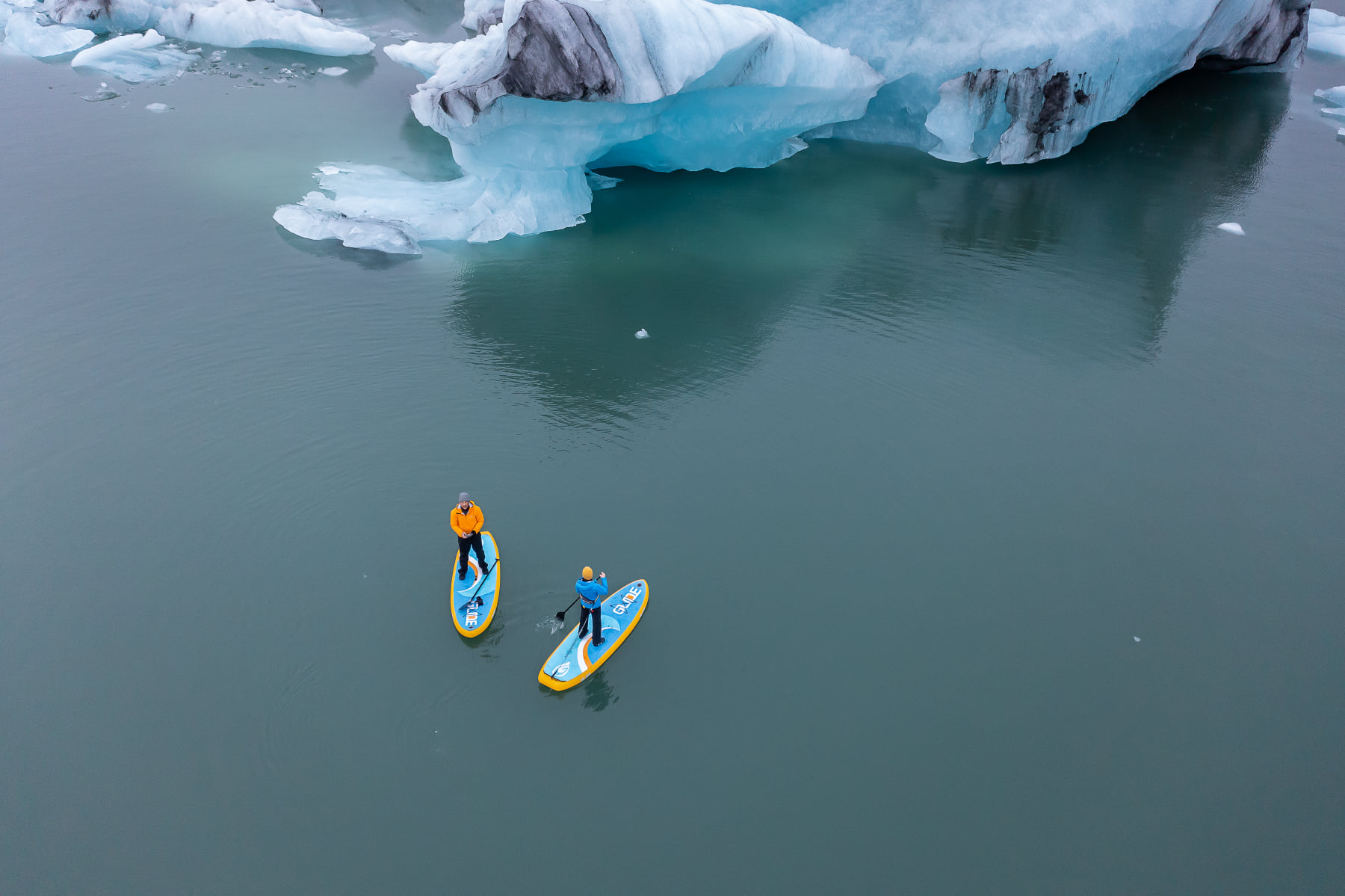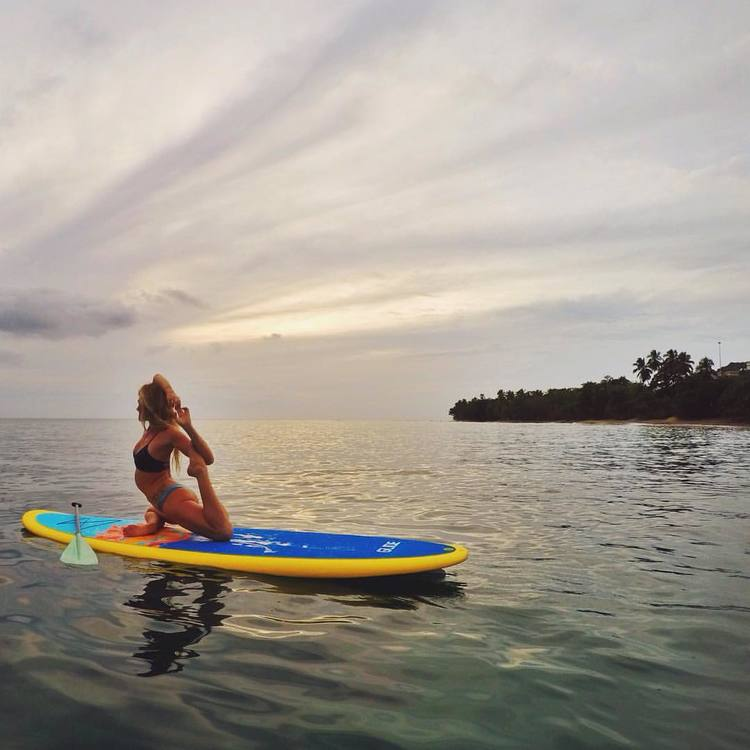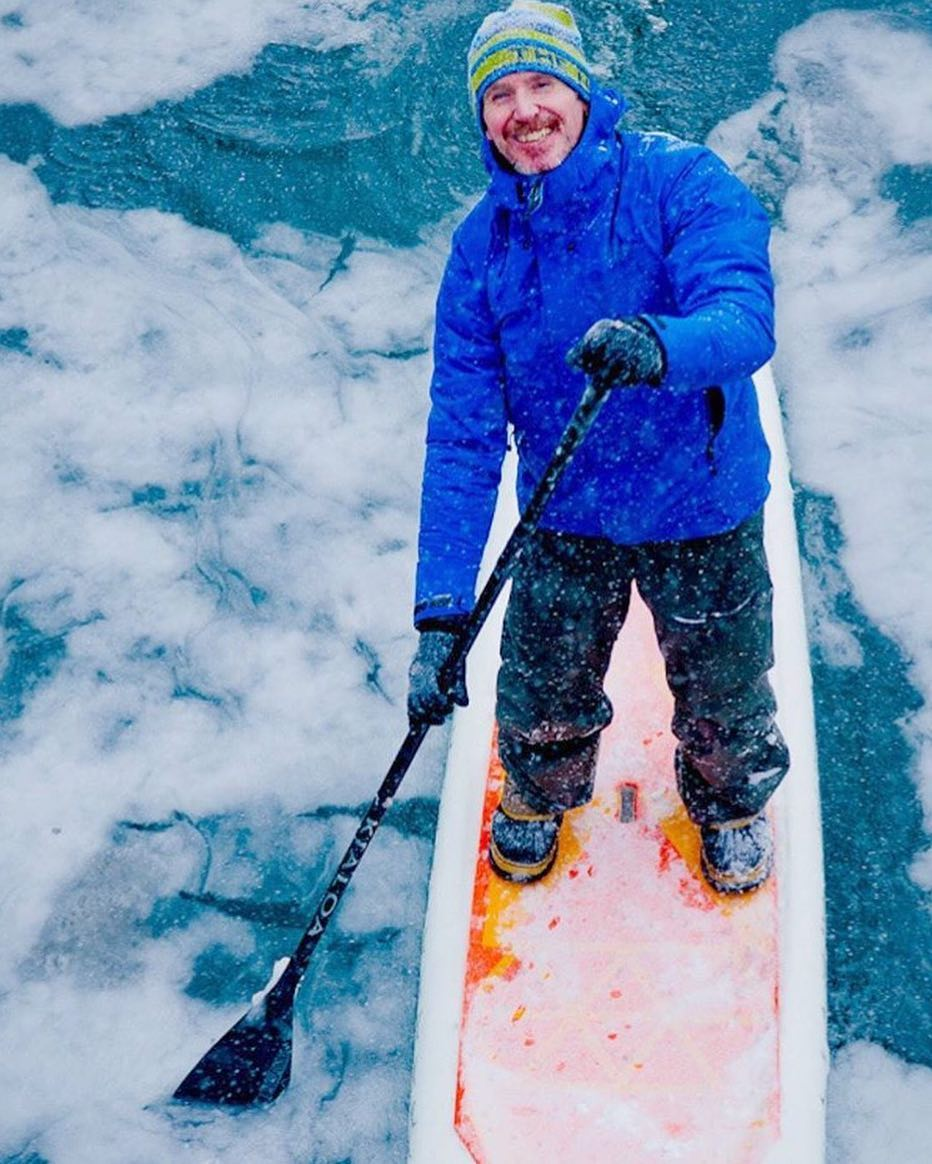
Unusual Paddle Board Locations: Frozen Lakes to Lagoons
Explore frozen lakes, volcanic lagoons, wildlife springs, urban rivers, glow bays, and remote mangroves—plus the gear and safety tweaks that make unusual paddle board trips smooth and unforgettable.
Chase unforgettable SUP experiences with unusual paddle board locations: wintery frozen lakes, volcanic lagoons, wildlife springs, urban rivers, bioluminescent bays, gentle surf, and remote biospheres.
Match the venue to your skills, respect permits and wildlife rules, and wear venue-appropriate safety gear (PFD, the correct leash).
Choose a travel-friendly iSUP, pack shallow/touring fins, plan upwind-first routes with bail-outs, and use lights for dusk/night.
With smart prep and short first sessions, you’ll collect wildly different landscapes safely—from ice and lava rims to glowing plankton trails and sunrise skylines.
Table of contents
Stand up paddle boarding can be as mellow as a glassy lake—or as wild as a bioluminescent bay at midnight. If you’re itching to paddle somewhere unforgettable, this guide curates unusual, photo-worthy SUP locations around the world, plus the gear, safety, and planning tips to make them doable. From frozen lakes to volcanic lagoons, urban skylines to wildlife springs, consider this your idea list for “we actually did that.” Explore unusual paddle board locations with us.

How to choose unusual paddle board locations (and stay safe)
-
Match venue to skill. Newer paddlers: flat, sheltered waters with easy exits. Experienced paddlers: remote or dynamic conditions with partners or guides.
-
Season & access. Check local closures, permits, and seasonal windows (ice, bioluminescence, wildlife rules).
-
Safety baseline. USCG-approved PFD, venue-appropriate leash (coiled for flat/open water; quick-release waist for rivers/current; straight for surf), weather check, and a simple float plan.
-
Environmental respect. No-touch wildlife policy, avoid sensitive shorelines, rinse gear to prevent invasive species, pack out trash.
1) Frozen lakes: a winter wonderland on water
Why it’s unusual: Paddling amid ice fields and crystalline shorelines flips the usual summer SUP script.
Where to try:
-
Lake Baikal, Siberia (advanced): The world’s deepest lake turns into an icy cathedral. Shoulder-season edges and calm winter windows can be surreal—but require expert cold-water planning.
-
Alpine lakes (various): Short, sunny winter days with minimal wind can offer safe, scenic laps close to shore.
Gear & tips:
-
Thermals: Drysuit (or thick wetsuit), booties, gloves, and a warm hat.
-
Redundancy: Spare layers in drybags, hot drink, traction at launch (cleats or carpet).
-
Rule #1: Stay near shore; if ice shifts or wind rises, you’re one sprint from land.
2) Volcanic lagoons & crater lakes: otherworldly water
Why it’s unusual: Mineral-rich colors, dramatic caldera rims, and lunar landscapes.
Where to try:
-
Icelandic crater lakes (intermediate): Clear, cold, dramatic. Look for legal, low-wind windows and avoid strong katabatic winds.
-
Azores, Canary Islands (intermediate): Caldera lakes and sheltered volcanic coves with vivid hues.
Gear & tips:
-
Board choice: Stable touring or all-around with tie-downs; cold-water layers year-round.
-
Wind: Launch upwind; volcano topography can funnel gusts.
-
Leave no trace: Fragile geology—stick to established entries.
3) Wildlife springs & clear rivers: transparent worlds
Why it’s unusual: Gin-clear water, palm-fringed banks, and close (respectful) wildlife viewing.
Where to try:
-
Silver Springs, Florida (beginner–intermediate): Manatees (seasonal), turtles, birds in ultra-clear spring runs.
-
Crystal/cenote-fed flows (Mexico, Balkans): Dreamlike clarity; know local rules and hire a guide where required.
Gear & tips:
-
Behavior: Float, don’t chase wildlife; idle with small strokes.
-
Protection: Polarized sunglasses; sun shirt; reef-safe sunscreen.
-
Board: All-around or lightweight touring; short fin for shallow spots.

4) Urban waterways: cityscapes from sea level
Why it’s unusual: Paddle past skylines, bridges, and icons—then grab coffee two blocks away.
Where to try:
-
River Thames, London (intermediate): Iconic views; tidal currents and traffic demand timing and group etiquette.
-
Big-city harbors (global): Early mornings = calmer water and fewer wakes.
Gear & tips:
-
Visibility: High-viz clothing, lights at dawn/dusk, whistle.
-
Rules: Know local navigation lanes, no-go zones, and right-of-way.
-
Timing: Avoid peak boat traffic and big tidal swings.
5) Bioluminescent bays & night paddles: glow shows
Why it’s unusual: Each paddle stroke ignites sparkles under your board—pure magic.
Where to try:
-
Bioluminescent bays, Puerto Rico (beginner—guided): Guided tours protect the bay and keep routes safe.
-
Clear lakes on no-moon nights: Not luminous, but stars and reflections deliver serious romance.
Gear & tips:
-
Lights: White nav light + small deck light; red headlamp to preserve night vision.
-
Insects: Long sleeves and bug protection.
-
Guides: Choose licensed operators in sensitive ecosystems.

6) Big-wave coasts & surf meccas: for the bold only
Why it’s unusual: Paddling near famous breaks is a bucket-list thrill—if you have the skills.
Where to try:
-
Nazaré, Portugal (experts only): Massive swells; SUP surfing here is specialist territory with safety teams.
-
Small-wave alternatives (intermediate): Gentle beach breaks to learn SUP surf basics first.
Gear & tips:
-
Progression: Start tiny. Learn surf etiquette, falling safely, and quick remounts.
-
Leash: Straight surf leash; helmet optional but wise for reefs or crowds.
-
Partner up: Spotter or coach recommended.
7) Remote biospheres & mangrove labyrinths: hidden gems
Why it’s unusual: Paddle in living museums—quiet, biodiverse, maze-like.
Where to try:
-
Sian Ka’an Biosphere Reserve, Mexico (intermediate): Mangroves, lagoons, and wildlife within a protected UNESCO site.
-
Tropical estuaries (global): Early mornings with still air and herons on the hunt.
Gear & tips:
-
Permits & guides: Often required; they protect habitats and keep you on legal routes.
-
Navigation: Offline maps, compass, and breadcrumbs—mangroves confuse even locals.
-
Leave no trace: Zero wake near birds, no scraping roots, pack out everything.
What board works best for “unusual” trips?
-
Inflatable SUPs: Tough, portable, forgiving—great for travel, rivers, and rocky shores (inflate to recommended PSI).
-
Hard boards: More reactive glide—nice for long, calm tours or small surf; treat edges kindly on rocks.
-
Fins: Match depth to venue (keel/shallow for skinny water; short, flexible for rivers; touring for long flats).
-
Tie-downs: Front/rear bungees carry drybags, layers, and water—key for remote spots.
Packing list for the weird and wonderful
-
Safety: PFD, leash matched to venue, whistle, phone-in-case, small first-aid, repair patch (iSUP), headlamp for dusk.
-
Comfort: Wind layer, sun shirt, polarized sunglasses, brimmed hat, snacks, and at least 1–2 L of water.
-
Navigation: Offline maps (download in advance), printed tide/current tables where relevant.
-
Extras: Microspikes/cleats for icy launches, towel, compact camera/remote.
Planning smarter (your 10-minute preflight)
-
Forecast & water data: Wind speed/direction, gusts, temps, tide/current/river flow.
-
Route shape: Upwind first; bail-out points every 15–20 minutes.
-
Local rules: Permits, guided-only zones, wildlife buffers, night-light requirements.
-
Share plan: Put-in, take-out, and ETA with a contact; carry ID.
-
Go/no-go: If conditions jump a category above your comfort, choose a calmer option—there’s always another day.

Final Thoughts
Unusual paddle board trips don’t have to be risky—they just need better prep. Pick one idea from this list, match it to your skill level, and plan like a pro: the right board, the right fin, the right safety for the venue. Then keep routes short on your first visit, build local knowledge, and leave the place better than you found it. The reward is huge: the hush of a frozen shoreline, neon trails at your blade, a skyline unfolding at sunrise. This is the good stuff.
FAQs
Can beginners try these locations?
Yes—start with urban flats, wildlife springs, or guided bioluminescent tours. Save frozen lakes, surf, and remote biospheres until you’ve built skills.
Which board is best for travel?
An inflatable SUP with front/rear tie-downs and a tough rail. Bring a touring fin and a shallow fin as a two-fin kit.
How do I stay warm on frozen lakes?
Drysuit, thermal layers, neoprene gloves/booties, warm hat, and routes close to shore. Pack a hot drink.
Is night paddling safe?
Only with proper lights, reflective gear, and routes you already know—or go with a licensed guide.
Do I need a guide in mangroves/biospheres?
Often, yes. Guides protect sensitive zones, handle permits, and keep you on legal lines.
What leash should I use in rivers?
A quick-release waist leash. Never ankle leashes in current due to entrapment risk.
How do I photograph unusual locations safely?
Use a phone lanyard or waterproof case, a mini tripod/remote, and shoot in golden hour for calmer water and softer light.
What about wildlife etiquette?
Keep a generous distance, never feed, idle with soft strokes, and obey seasonal closures.
Can I rent gear for these trips?
In many destinations, yes. Ask for river fins, PFDs, and lights if needed; confirm PSI and rail condition on rentals.
How do I pick the best month to visit?
Search historical wind/tide/flow for the region, then aim for the shoulder season locals recommend—fewer crowds, better conditions.





